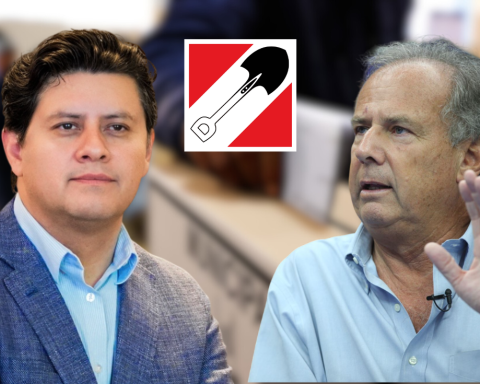Residents of the La Esperanza sector and the residents of the Carretas creek have been demanding action from the authorities for a long time.
In Quito the risks are not only in the Broken The Roof, where the alluvium on January 31, and it is not the first time that this has been discussed. On January 14, 2022, the collective ‘Fighting for the Ravines‘, made up of those affected by the slopes, concentrated outside the Constitutional Court and demanded action for the houses that are in danger.
And it is that residents of the La Esperanza sector, in the Monjas river basin in the north of Quito, say they fear that a tragedy so it affects them. They assure that they have gone ahead to ask for solutions and that “no administration has paid attention to them”, despite the fact that in 2021, the budget for the execution of the rain plan, which contemplates the management of streams, had a fund of $13 million.
“For prevention and mitigation works, $1.4 million will be allocated to the emergency and intervention fund with machinery,” detailed a statement from the Mayor’s Office at the time, with Jorge Yunda at the helm.
“What is the action? Come later when everything has already happened. We don’t even know if we’re going to be able to build our houses here again or where to go,” says Olga Chamorro, a resident of the gasca.
Claims without solutions
In 2021, a prevention plan was not seen in the Broken Carts, in Carapungo. In October of that year, 100 properties were affected after the rains and the landslide. Estefanía Pabón, president of the collective ‘Quebrada Carretas in danger‘, he says they have had a years-long struggle for solutions.
LA HORA requested information from the Secretary of Security to know what the current emergency budget is, as well as the other emergency points due to rains; Until press time, there was no response.
However, during a tour, Daniela Valarezo, Secretary of Security, said that they are developing an action plan.
In addition, a report from the Security Secretariat (2022) details that the COVID-19 pandemic and the constant change of municipal authorities (Yunda-Guarderas conflict) have slowed down actions to remediate critical points.
What to do now?
Cristopher Velasco, president of the Association of Professionals in Risk management of Ecuador, says that there are three fields to provide definitive solutions. For example, a law of Risk management that regulates the responsibilities of the central or sectional government. The project was presented 14 years ago. “There it is difficult to know what to do and there is a lack of legal issues.”
In addition, Ecuador does not have a home insurance policy. “Those are the priorities as public policy.” It is also necessary to strengthen prevention with the community during a sudden event, mainly in risk areas “the family must know where to find themselves during these events such as those in Gasca,” says Velasco. (AVV)
IT MAY INTEREST YOU:


















